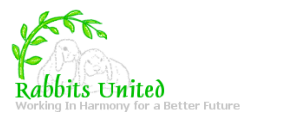

I've asked for it now! :lol: I'm open to correction by any biochemists around.
I'll put in a few wiki links to explain the terms. I find it easier to look at molecular structure to understand relationships.
We're looking at the general area of how haem can be made & how it's changed to a form which can be excreted by the kidneys -the biochemistry of porphorins. Although rabbits work on a very similar principal to humans there are some differences in biochemistry. I don't know the details in porphorin metabolism.
My hypothesis is that rabbit urine
may be like human urine in that the orange pigment in rabbits fed their natural green plant diet, rich in chlorophyll is mainly urobilin, because they eat far more porphorins than they need.
I've noticed that when rabbits are fed the standard diet of mostly hay with a little veg & small portion of pellets their urine is very pale, their caecals are brown, & their waste poops are large round & golden.
As they are transferred to a fresh plant diet their urine gradually darkens, caecals are black with a slight greenish tinge, & their wastes are dark like those of wild buns.
Weight is constant & general condition excellent.
Although the urine is dark, liver function tests, & kidney tests are absolutely normal, as are the red blood cells.
This continued for 6 years in Thumper's case.
[For Thumper the best index that he was dehydrated was that he passed less urine & it was much chalkier - but there was little colour change. (Unlike humans who get more pigment = darker urine when dehydrated)]
There's a situation in injured humans where the biochemical "factory" is working fine, & there's no disease eg several brokem bones which have bled into the tissues such that the patient has lost so much blood from the circulation they need a blood transfusion.
WE have added a large amount of haem to the patient's body before the patient can reycle the haem they've lost into the tissues to make more blood. Over the next few days as they break down the blood clot to recycle the haem the patient's body basically "says", "there's far too much haem round here -chuck it" & their urine goes very dark!
I assumed that as my rabbits' biochemistry side was working normally, they were in very good condition, actually surviving their respective illnesses better than would be expected, & they were eating a normal wild rabbit diet, this was normal for buns on a natural diet, & caused by a high porphorin intake beyond their bodily needs, (in this case from diet) leading to high porphorin excretion.
What is a porphorin? A family of molecules with 4 pentagonal carbon rings (pyrrole rings) as
http://en.wikipedia.org/wiki/Porphyrins. You can see the structure of haem there.
What is haem? It's an essential part of the haemoglobin molecule which is essential fro oxygen transport rounf the body. It's also essential to release the energy from glucose (in the cytochrome oxidase chain) It's important! :lol:
Now look at the structure of Chlorophyll the green pigment in plants.
http://en.wikipedia.org/wiki/Chlorophyll#Chemical_structure
Can you see that group of 4 pentagonal pyrrole rings? but the big big difference is that haem has a central Fe (iron) atom but chlorophyll has a central Mg (magnesium) atom.
At the bottom of the article you can see what happens to the chlorophyll when plants are "degreened", eg hay. The structure changes markedly - it's degraded a lot.
OK Chemists can synthesise haem from plant chlorophyll. It's lengthy & complicated, & there are several processes. BUT the only way they can break open those 4 pyrrole rings to replace the Mg with the Fe is to use bacteria.
OK I'm guessing here. I suspect that the micro organisms in a rabbit caecum are perfectly capable of breaking open those pyrrole rings in chlorophyll to make the conversion to haem much simpler than the way humans metabolise it. Also the colour of pure chlorophyll is black with a greenish tinge - much like naturally fed bunny caecals.
So that is why I think that the difference in urine & poop colour between more naturally fed buns & the standard domestic diet is different. Purely due to the amount of chlorophyll in the diet & how the body metabolises that family of nutrients -the porphorins.
I'm making some big assumptions, but think they are reasonable to make given the models I
do understand, until someone comes up with a better theory.
In the meantime I'll carry on talking about plant pigments cos it's a heck of a lot easier & they are certainly a big factor too!:lol::lol:
Also it's far too long since I opened a biochemistry book!! :lol:
Finally a big difference between rabbit porphorin metabolism & humans, is that when very stressed the urine can be passed pale & turn dark even blood coloured on standing. This is due to uribilin precursors. With very severe stress they can pass red urine looking like just like blood, but when tested with Dipstix it isn't blood. In fact it's porphorins. If humans do that we've got a disease -porphyria, but it's normal for rabbits under severe stress.
Here endeth the treatise on rabbit urine colour!:lol:
I really like you Sierra 323. It's the way you politely suggest "But that doesn't explain what I'm seeing". Good for you. :thumb:


